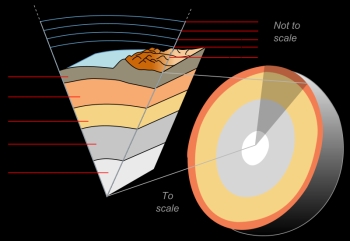Core, Mantle, And Crust Are Divisions Based On Composition. The Crust Makes Up Less Than 1 P

How to make lamp at home using salt and water
In our country today, things are now cost, you will hear that a lamp that cost #200 is now #500.

The Composition and Structure of Earth
Core, mantle, and crust are divisions based on composition. The crust makes up less than 1 percent of Earth by mass, consisting of oceanic crust and continental crust is often more felsic rock. The mantle is hot and represents about 68 percent of Earth’s mass. Finally, the core is mostly iron metal. The core makes up about 31% of the Earth. Lithosphere and asthenosphere are divisions based on mechanical properties. The lithosphere is composed of both the crust and the portion of the upper mantle that behaves as a brittle, rigid solid. The asthenosphere is partially molten upper mantle material that behaves plastically and can flow. This animation by Earthquide shows the layers by composition and by mechanical properties.

Crust and Lithosphere
Advertisement

Link socials
Matches
